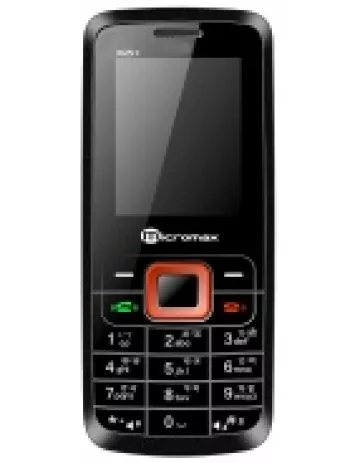
Overview of the Micromax Q50
The Micromax Q50 is a feature phone that was announced and subsequently released in 2010. This device has since been discontinued but remains a point of interest for technology enthusiasts who appreciate the evolution of mobile devices. It uniquely combines basic functionality with the essentials of mobile communication, making it a suitable choice for users looking for simplicity and reliability in their mobile phone usage.
Network and Connectivity
The Micromax Q50 operates on GSM technology, supporting 2G bands at GSM 900 and 1800 for SIM 1. It is equipped with GPRS class 12 and also offers EDGE connectivity. While it doesn't support WLAN, it does feature Bluetooth connectivity, allowing for wireless file transfers and connectivity to other Bluetooth-enabled devices. The phone also includes a Stereo FM radio with recording capabilities, an appealing feature for users interested in listening to on-the-go music and news.
Body and Design
The phone has compact dimensions of 114 x 60 x 10.4 mm, making it quite portable and comfortable to handle. It weighs only 96 grams, making it incredibly light. One of its highlight features is the QWERTY keyboard, which greatly enhances the text input experience, especially for users accustomed to typing on a physical keyboard. The Micromax Q50 also supports dual SIM functionality, accommodating Mini-SIM types, which provides flexibility for users who need to manage two separate phone numbers or networks.
Display
The display of the Micromax Q50 is a 2.2-inch TFT screen capable of showcasing 256K colors. With a screen resolution of 320 x 240 pixels and an approximate 182 ppi density, the display is standard for devices of its time, providing a decent visual experience suitable for basic functions such as texting and calling.
Camera Capabilities
On the photographic front, the Micromax Q50 is equipped with a 2 MP main camera and supports video recording. This camera setup is basic, ideal for users whose primary focus is not photography but who appreciate the ability to capture spontaneous moments.
Memory and Storage
The phone comes with a dedicated slot for microSDHC cards, allowing users to expand their storage as needed, which is crucial given the modest onboard memory typical of feature phones. Furthermore, the phonebook can store up to 1000 entries and supports photo call feature, which also showcases its adequacy for users who require a reliable contact management system. Call records can also be meticulously maintained.
Audio and Multimedia
The Micromax Q50 is equipped with a loudspeaker and a 3.5mm headphone jack, providings options for audio output. Users can make use of wired headphones or listen to audio content through the device’s speaker. The stereo FM radio feature is notable, as it not only allows users to tune into their favorite radio stations but also to record broadcasts.
Battery Life
The device is powered by a removable Li-Ion 1000 mAh battery, which may seem minimal by today’s standards but suffices for the features and requirements of this device. Its standby time is up to 192 hours, and talk time extends to about 3 hours, making it reasonably efficient for the era in which it was released.
Software Features
Preloaded with a feature phone operating system, the Micromax Q50 supports various messaging formats, including SMS, MMS, Email, and IM, providing users with multiple communication avenues. For browsing, it utilizes the WAP 2.0/xHTML alongside Opera Mini, offering basic internet browsing capabilities. For entertainment, downloadable games are supported. Java support further enhances the availability of applications and games, diversifying the user experience.
Conclusion
Although the Micromax Q50 has been discontinued, it represents a significant phase in mobile phone history, where feature phones were a staple for many users around the world. It offers a blend of fundamental telecommunication features with some bonus functionalities like a full QWERTY keyboard and dual SIM support. This makes it worthy of recognition amongst enthusiasts and collectors. Its affordable price at launch and basic yet efficient features made it a practical choice for many users during its active period on the market.
Key Features of Micromax Q50
- QWERTY Keyboard for easy typing
- Dual SIM (Mini-SIM) support for managing two numbers
- Compact and lightweight at 96 g
- 2.2-inch TFT display with 256K colors
- Expandable memory with microSDHC card slot
- 2 MP main camera with video recording capability
- Loudspeaker and 3.5mm audio jack support
- Bluetooth connectivity for wireless data transfer
- Stereo FM radio with recording feature
- Removable Li-Ion 1000 mAh battery
- Available in Black and White colors
- Affordable pricing (around 40 EUR)
Disadvantages of Micromax Q50
- Lack of 3G or 4G connectivity; limited to GSM network
- Discontinued model; might be difficult to find support or parts
- Small screen size with limited resolution (~182 ppi density)
- No Wi-Fi capability available
- Lacks a front selfie camera
- No GPS for positioning services
- Limited sensors provided
- Low battery capacity (1000 mAh) with only up to 3 hours of talk time

View Also
More Phones
All Rights Reserved +14266 Phones © Mobilawy 2025

























